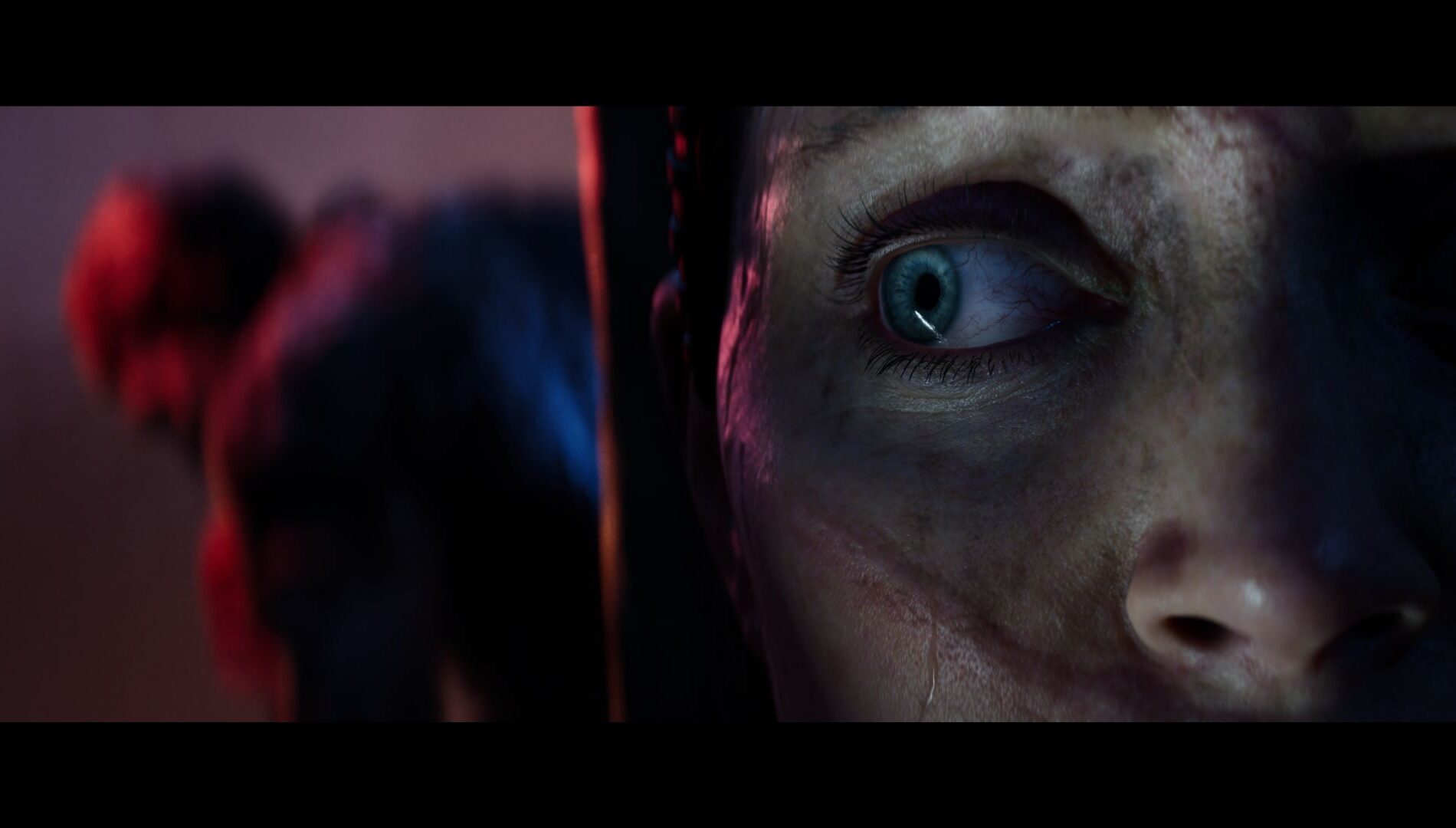Headphones Required – Senua’s Saga: Hellblade II’s Binaural Audio Is Like Nothing You’ve Ever Heard
2017’s Hellblade: Senua’s Sacrifice was an exceedingly special game. A bold, brash direction for Ninja Theory, the decision to craft a short, narrative experience revolving around mental health was a brave leap, but one that ultimately paid off. Now, seven years later, the studio is gearing up to reveal a sequel to Senua’s story, built with the same love and care, but expanding on the debut in every conceivable way.
In the run up to launch, we’ll be bringing you the story of Senua’s Saga: Hellblade II from inside the studio itself, as well as stories and lessons from Hellblade’s creative leads. This is Ninja Theory’s ultimate form, filled with industry-leading talent, groundbreaking technology, and one of the most unique approaches to game development you’ve ever seen to fulfil the ultimate goal – the pursuit of true immersion.
If you’ve played Hellblade: Senua’s Sacrifice, you will be more than familiar with its incredible audio design; most notably the memorable, incessant dialogue that goes on inside Senua’s mind throughout the course of the game – and, by association, the unique way it enters your head, too. In Senua’s Saga: Hellblade II, Ninja Theory is going all out on implementing audio to establish its sense of place – here the first game used audio techniques simply for Senua’s internal dialogue, the sequel makes sound trickery an integral part of the game.
Xbox Wire had the honor of sitting down with Hellblade audio director David Garcia Diaz in his studio, to find out how the team did it, why it’s needed, and uncover more about the utterly mesmerizing process of building binaural audio into the very fabric of Senua’s journey.
For the uninitiated, binaural audio is a method of recording sound using two microphones, designed to create a 3D soundscape as you would hear it with your own ears. It’s not a new process – but its implementation across the Hellblade series is both unique and integral to its design. This is the most authentic recreation of psychosis you can experience, and Garcia Diaz has landed here through almost a decade of research, patience and skill.
A Leap In Technology
Garcia Diaz separates Hellblade’s main pillars of evolution down into two parts – technological and psychological. The technological improvements stem from a sizeable upgrade in the resources and equipment used to capture its soundscape; Garcia Diaz’s office showcases a smorgasbord of impressive tools that left my inner synth enthusiast in awe.
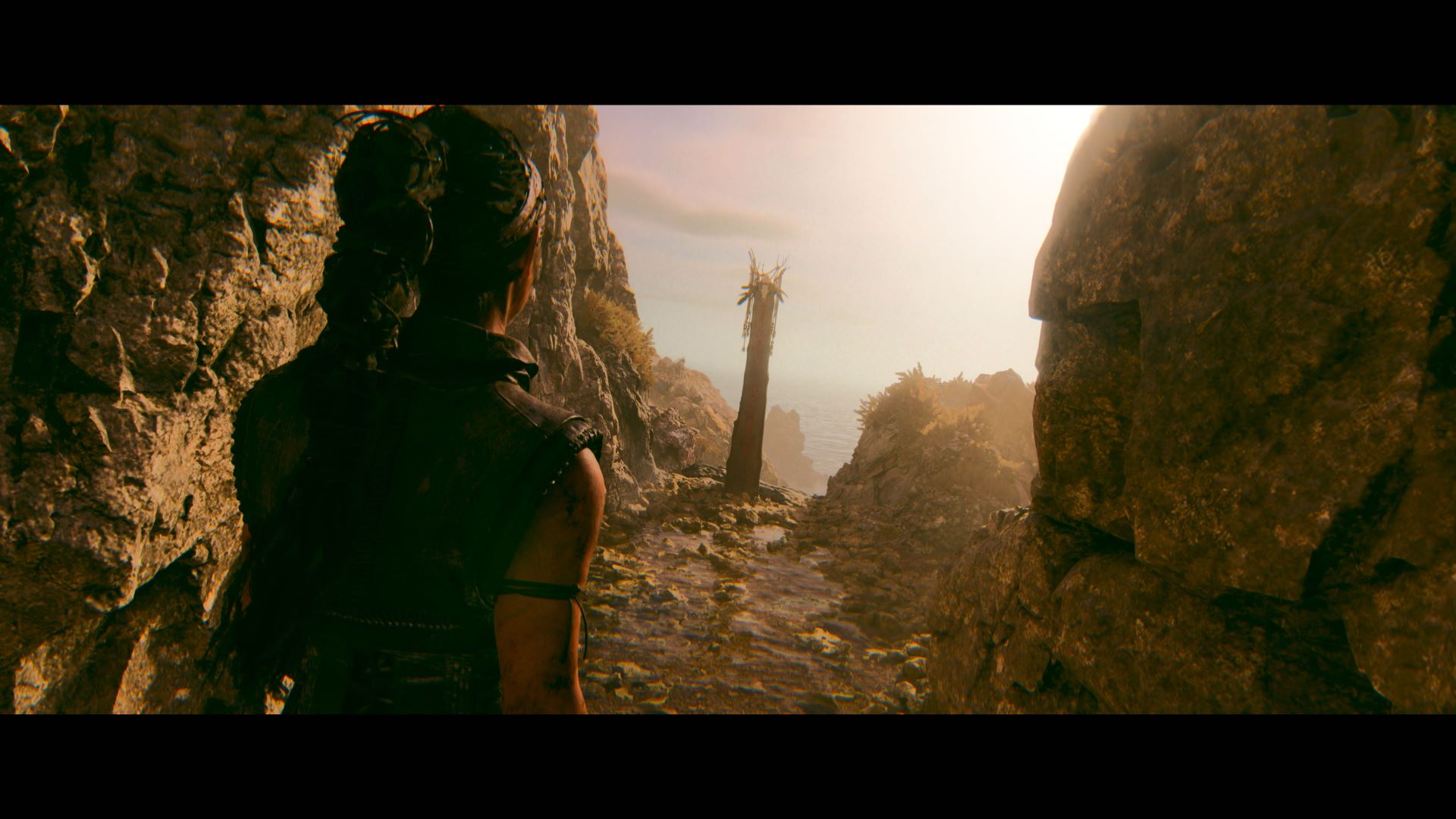
There’s also now a team of seven working on Hellblade II‘s audio design, whereas Garcia Diaz worked alone on Senua’s Sacrifice. He admits: “The first game was a massive project with so many details, and I couldn’t do everything. There’s a lot of places where you can’t hear foley or footsteps, I just focused on what felt the most important.”
As I move through Hellblade II‘s incredible environments, I can truly feel and hear the premium approach to even the smallest sounds. During one scene, I lead Senua through an abandoned village, and we can hear the remnants of its fate, echoing from the past. I hear an anguished mother crying intertwined with the harsh buzz of flies orbiting a nearby carcass, so intense and erratic I nearly swat myself a few times. On the calmer, open coasts, I hear the distant crashing of waves and ambient winds landing secondary to the crunch of Senua’s feet padding cautiously over loose stones.
Crucially, with headphones on, I can hear where all of this is. This isn’t a wash of sound effects, they’re placed precisely where they should be. Garcia Diaz and his team have been able to consider acoustics more fully, and how sound moves and reverberates in Hellblade II as it does in the real world, to create that deeper sense of immersion.
“The acoustics play an incredibly important role,” Garcia Diaz adds. “For example, if you shout and there’s a rock, the sound is going to bounce off that. If a priest is chanting in a cave, you want to hear the sound travelling towards you, or the opposite if something is moving away. All of the sounds work together to create atmosphere and tension, and with this technology, we can achieve that.”
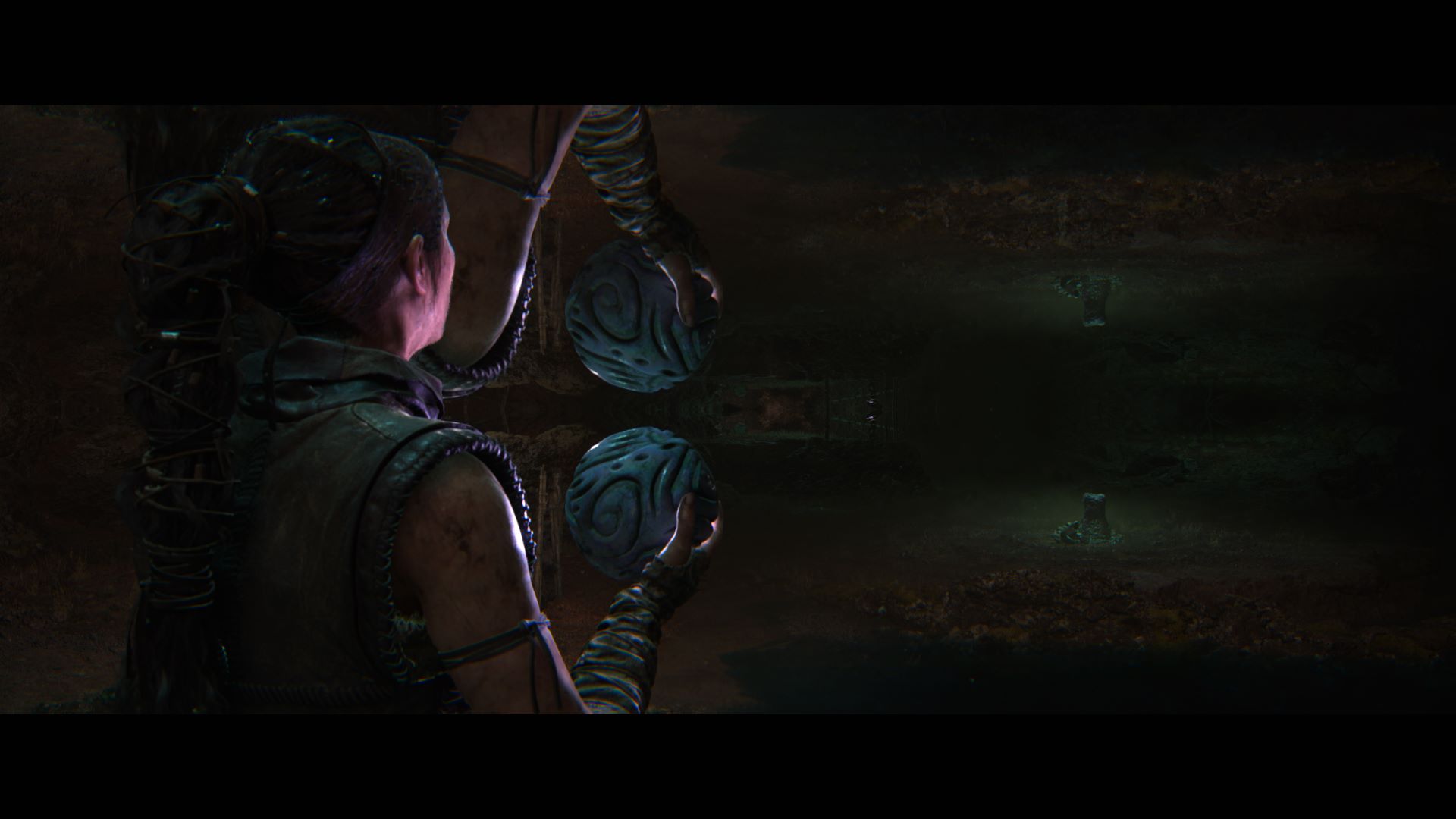
Senua’s Growth
The other main aspect Garcia Diaz addresses is the psychological evolution of Senua herself, and how that has shaped what she will hear in the world, and in her head. She’s stronger and more in tune with her psychosis – not cured, but armed with a greater understanding of what to expect, which in turn leads to a wider range of conversational exchanges between the voices.
Senua’s condition is once again represented in part by the Furies – the voices that she will hear throughout the game. In Hellblade II, the voices can still feel every bit as overwhelming, but there is a fluidity to them that can make them almost a comfort as you follow Senua.
“Hellblade 1 had very dark ‘colors’ – now we have other colors”, Garcia Diaz explains. “Senua has the ability to feel [the Furies] in a different way, they now have deeper, meaningful conversations which didn’t happen in the first game, which I think is very beautiful.”
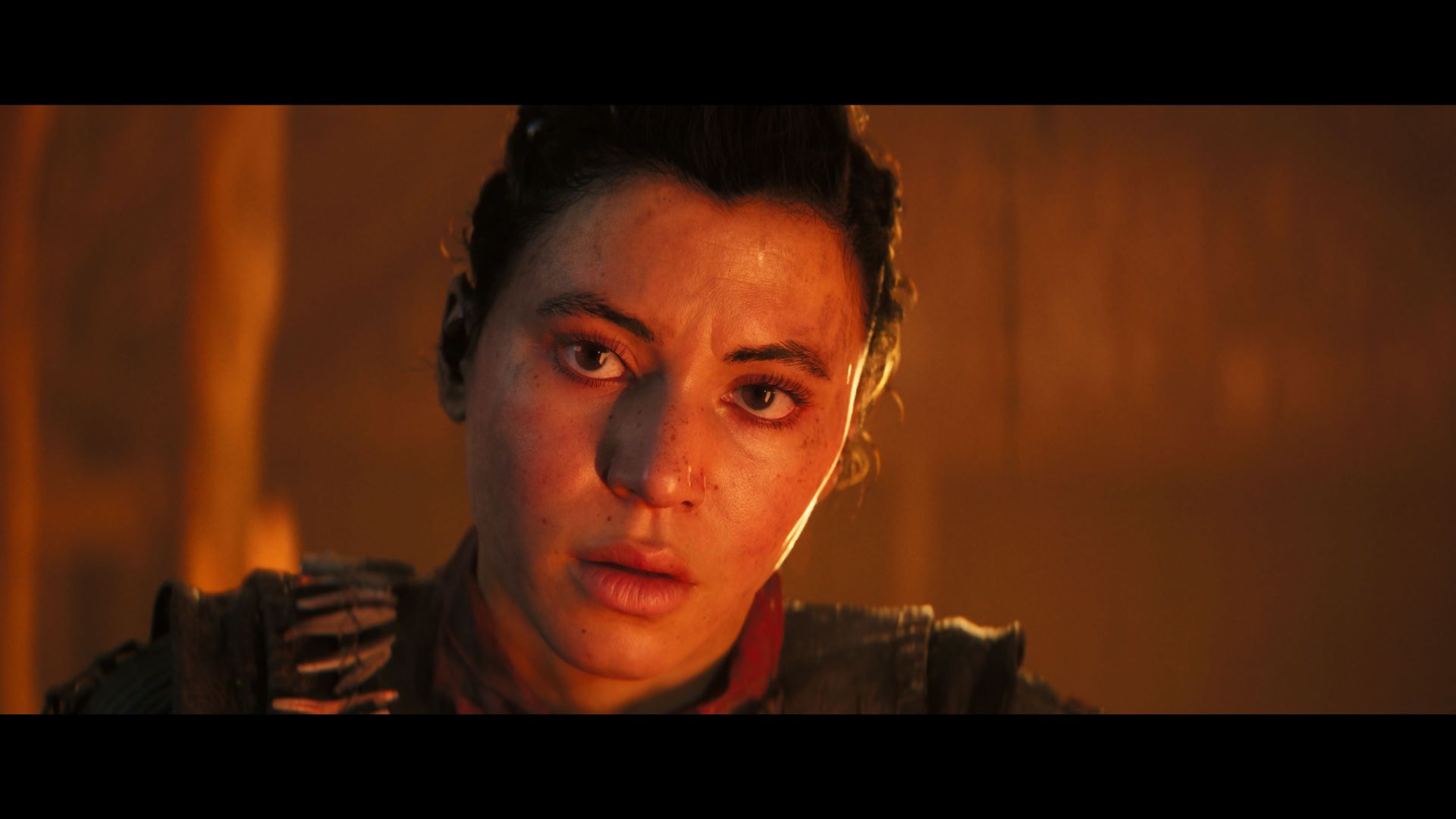
This is represented in action as I watch Senua engage in a conversation with several new characters across her journey. The Furies are in conflict each time, debating Senua’s reactions, running through potential responses and justifications with a mind-bending pace. But Senua is no longer a prisoner to this cacophony, she can see past the influence of the voices and decide for herself how to proceed in that moment. Does this person need my help? Will they hurt me? Senua can find her own answers through the noise just as the player does, and we can feel her emotions and considerations reflected in the style, tenacity and placement of the sound, similar to a score for a movie.
“We are representing abstract concepts with sound,” Garcia Diaz adds. “What does guilt sound like, and what is our vision of guilt for Senua? How do we interpret sadness, or euphoria, or rage?”
“We are not just recreating a sound, we are creating a character’s reality, and this is our way of interpretating these emotions [for Senua] with sound and music and voices, all tied together to create one moment.”
“We are not just recreating a sound, we are creating a character’s reality, and this is our way of interpretating these emotions.”
David Garcia Diaz
Three’s A Crowd
While Hellblade: Senua’s Sacrifice is an insular journey that follows Senua alone with the accompaniment of the Furies representing how her psychosis manifests, Hellblade II will see Senua encounters new characters in the world for the first time. She’ll engage in dialogue with these strangers, and face the trials of navigating relationships while handling the overwhelming, unrelenting narration of her condition.
In one Hellblade II scene, Senua meets a stranger that is being held captive by Viking slavers. In this moment, she’s conversing with him directly, but the voices are at odds with what both parties are saying out loud.
“You have to consider – what happens if there is a conversation between three people? What does that sound like to everyone involved?” Garcia Diaz adds.
While I’m at the studio I’m shown a snippet of the Furies in action. Performers Abbi Greenland and Helen Goalan take part in an unscripted performance depicting Senua moving through a cave. Through headphones, I hear a haunting narration of the surroundings, their thoughts seamlessly falling into a flow state. But what I see is the two actors circling both sides of the head-shaped Neumann microphone sitting between them like vultures picking at a carcass – allowing their voices to feel as though they’re moving through your head, as they would do for Senua Even in this brightly-lit room, I’m on edge after 30 seconds of this experience, the unpredictable hisses and snarky giggles picking at my brain. Garcia Diaz likens the experience to jazz – it’s atmospheric, moving and some of its best parts are created out of improvisation, not a pre-agreed script.
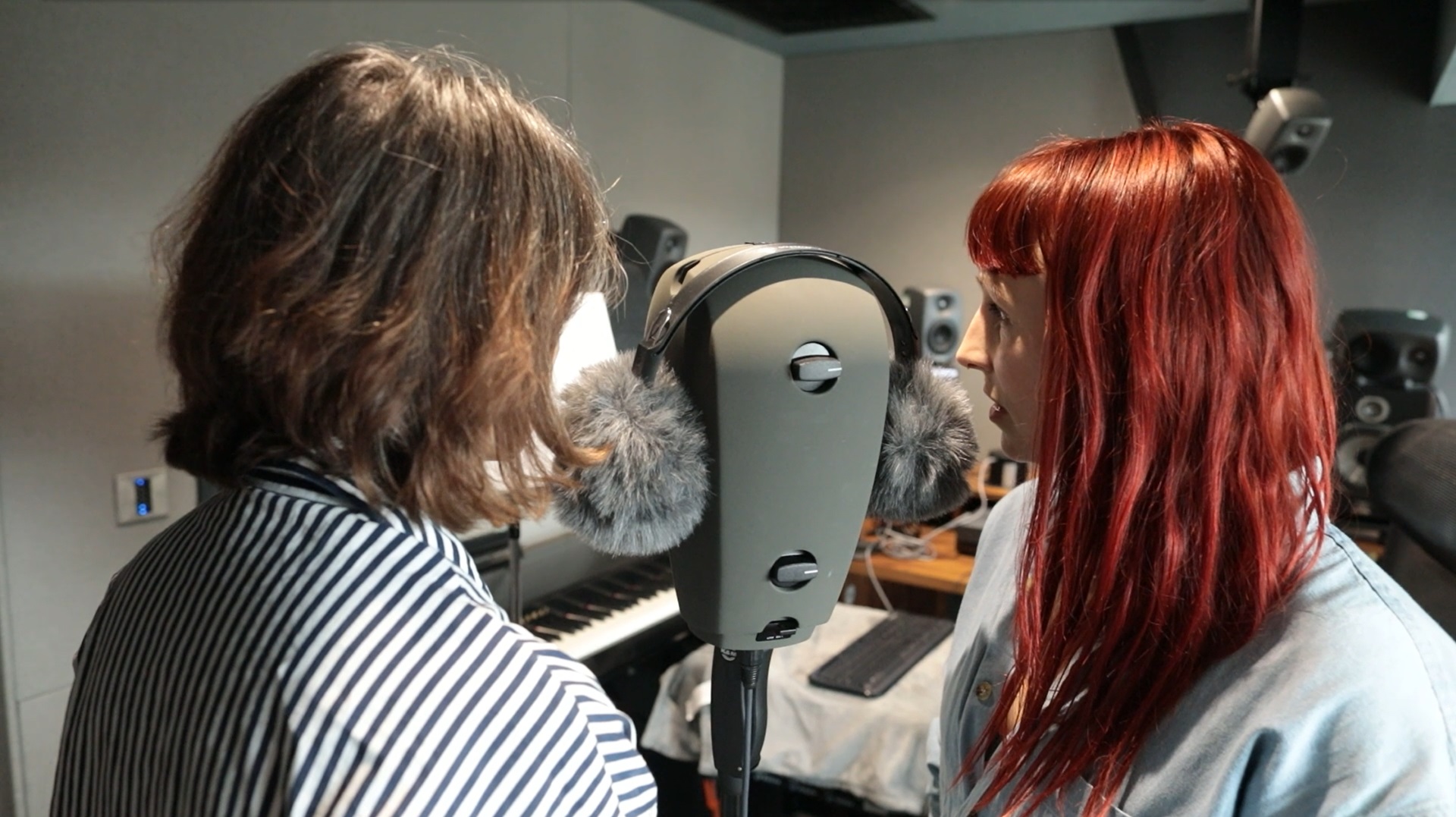
“In music you have crescendos, diminuendos, fortissimos, pianissimos – I want to do the same with the voices,” Garcia Diaz says. “Sometimes they grow, sometimes they’re quiet so you don’t feel constantly tired or overwhelmed.
“There are enough dynamics that we’re able to have them present almost all of the time – sometimes we’ll cross a boundary, but I think this is important, because the voices are something that Senua cannot switch off.”
The importance of the audio is something that cannot be overstated in both Hellblade games – it’s what makes Senua’s journey so unique and emotional to experience. Garcia Diaz knows this, but he also recognizes that his role as audio director is just one cog in Ninja Theory’s wider pursuit for immersion.
“Everything needs to go together, and I’m excited for people to see it all,” he says. “For people to discover this new Senua, and to get immersed in her world again. That’s what we’re striving for – a unique experience, and an immense journey.”
Senua’s Saga: Hellblade II will be released on May 21, 2024 for Xbox Series X|S, Windows PC, Steam and Cloud – and will be available with Xbox Game Pass and PC Game Pass day one.
The post Headphones Required – Senua’s Saga: Hellblade II’s Binaural Audio Is Like Nothing You’ve Ever Heard appeared first on Xbox Wire.
Source: Xbox Blog
—
